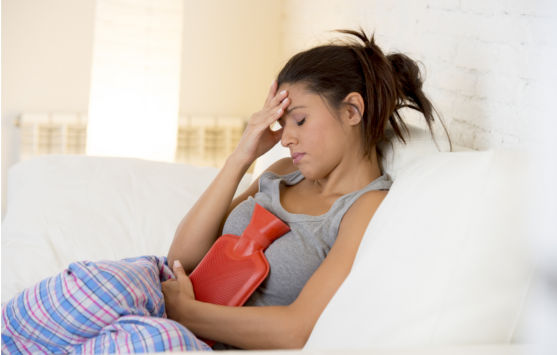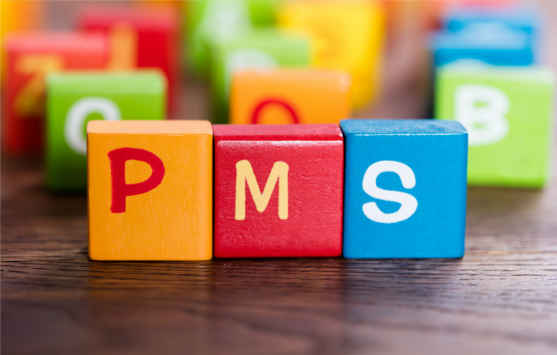Menstrual discomfort and what you can do by yourself
Are you suffering from menstrual discomfort every month? Then you are not alone as this is one of the most common problems in women’s health. Menstrual discomfort may manifest in various symptoms time-related to menstruation. The most common symptoms are menstrual pain, in medical terminology called dysmenorrhoea, as well as the premenstrual syndrome (PMS). Other discomforts can be headache, nausea, and low energy.
The abdominal pain or menstrual cramps may appear as strong spasmodic pain in the pelvis right before or during menstruation. Very often it is most intense during the first day of menstruation before it gradually decreases and then completely disappears latest with the end of the menstruation. There are many causes for dysmenorrhoea. Mostly, the cause is an increased production of prostaglandins in the uterine lining. Prostaglandin G2 is a tissue hormone in the womb that increases the pain perception, triggers inflammations, and therefore causes the pain and cramps. An increased secretion of Prostaglandin G2 can be triggered amongst other things by nutrition based on too many animal products. Animal products contain large amounts of arachidonic acid which again is a pre-stage of Prostaglandin G2 and in this way they may contribute additionally to the menstrual pain. Another cause for dysmenorrhoea is endometriosis, where uterus-like tissue can be found in “unusual” places outside the cavity of the uterus. Since the displaced tissue takes part in the menstrual cycle like the normal uterine lining, it often leads to painful menstrual periods, with sometimes unbearable colic or labour-like pains.
The premenstrual syndrome (PMS) is characterized by various physical and mental discomfort, starting regularly approximately 4 – 14 days before the menstrual period and quickly ends again with the begin of the period. The symptoms are numerous and vary from irritability, mood swings, having the munchies to water retention.
Menstrual discomfort can influence the daily routine in women’s life considerably by putting them out of action for many hours every month. Prescribed medication as part of conventional medicine shouldn’t be a long-term solution. It merely suppresses the symptoms without curing the cause, let alone the chemical ingredients putting strain on liver and kidneys over time.
There are numerous naturopathic alternatives for menstrual discomfort.


There are numerous excellent naturopathic alternatives for menstrual discomfort. Menstrual discomfort can be treated well using homeopathy. Homeopathy approaches the cause of the problem but does not suppress the symptoms. There are plentiful homeopathic remedies that can help with menstrual discomfort, while the most suitable remedy is being determined individually in each case. Many other naturopathic measures, like a healthy diet, reflexology, or herbal medicine, are suitable to accompany the homeopathic treatment.
What you can do by yourself to ease menstrual discomfort:
- Take a rest and consciously take time out before and during menstruation. Slow down, go to bed earlier than usual, practice yoga or go for a walk.
- Warmth: the most well-known method of treatment with menstrual pain. Relax with a hot-water bottle or a bath (with essences of lavender, melissa, or roses).
- Eat a healthy and balanced diet: reduce animal products as they contain arachidonic acid and thus support pain and inflammation. Ensure that you eat enough Omega-3 fatty acids and that your diet is rich of alkaline foods (lots of vegetables). Eat plenty of food which is rich of magnesium and calcium (greens, pumpkin and sunflower seeds, quinoa, cocoa). Avoid alcohol and caffeine.
- PMS-tea for discomfort before the menstruation. 20 g alchemilla herb, 20 g milfoil herb, 20 g dandelion root and herb, 10 g melissa herb, 10 g fennel seeds, 20 g St. John’s wort. Pour 100 – 150 ml boiling water over one heaped teaspoon of the mixed herbs, cover and infuse for 10 minutes. Drink 3 cups daily from begin of the first symptoms until the start of the menstruation.
- Melissa oil: massage your belly and lower abdomen with melissa oil. This is relaxing and anticonvulsant.
